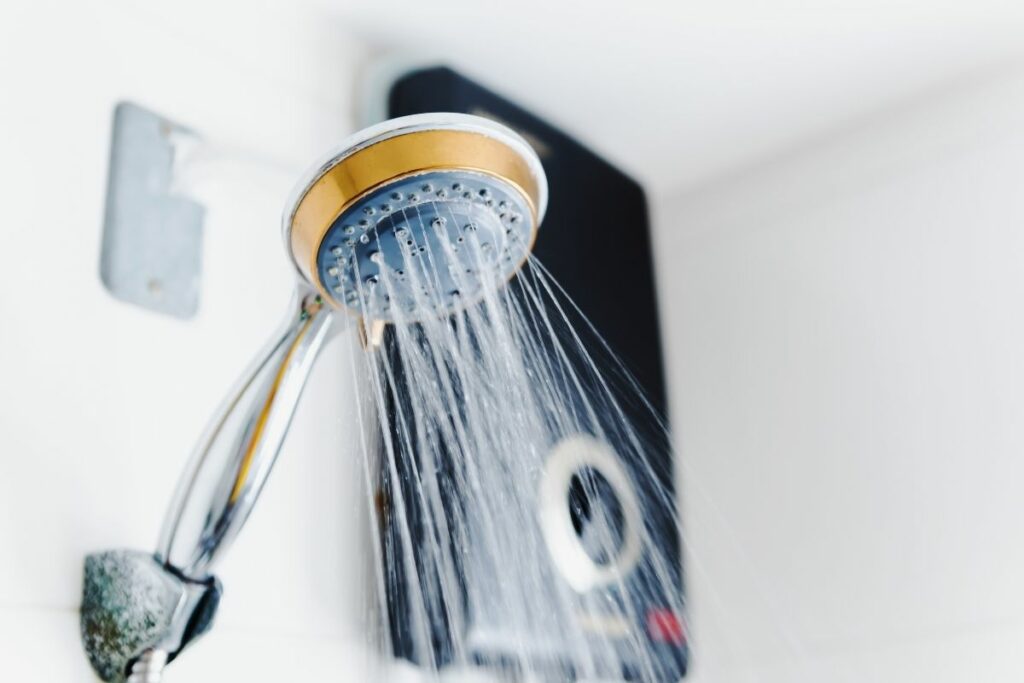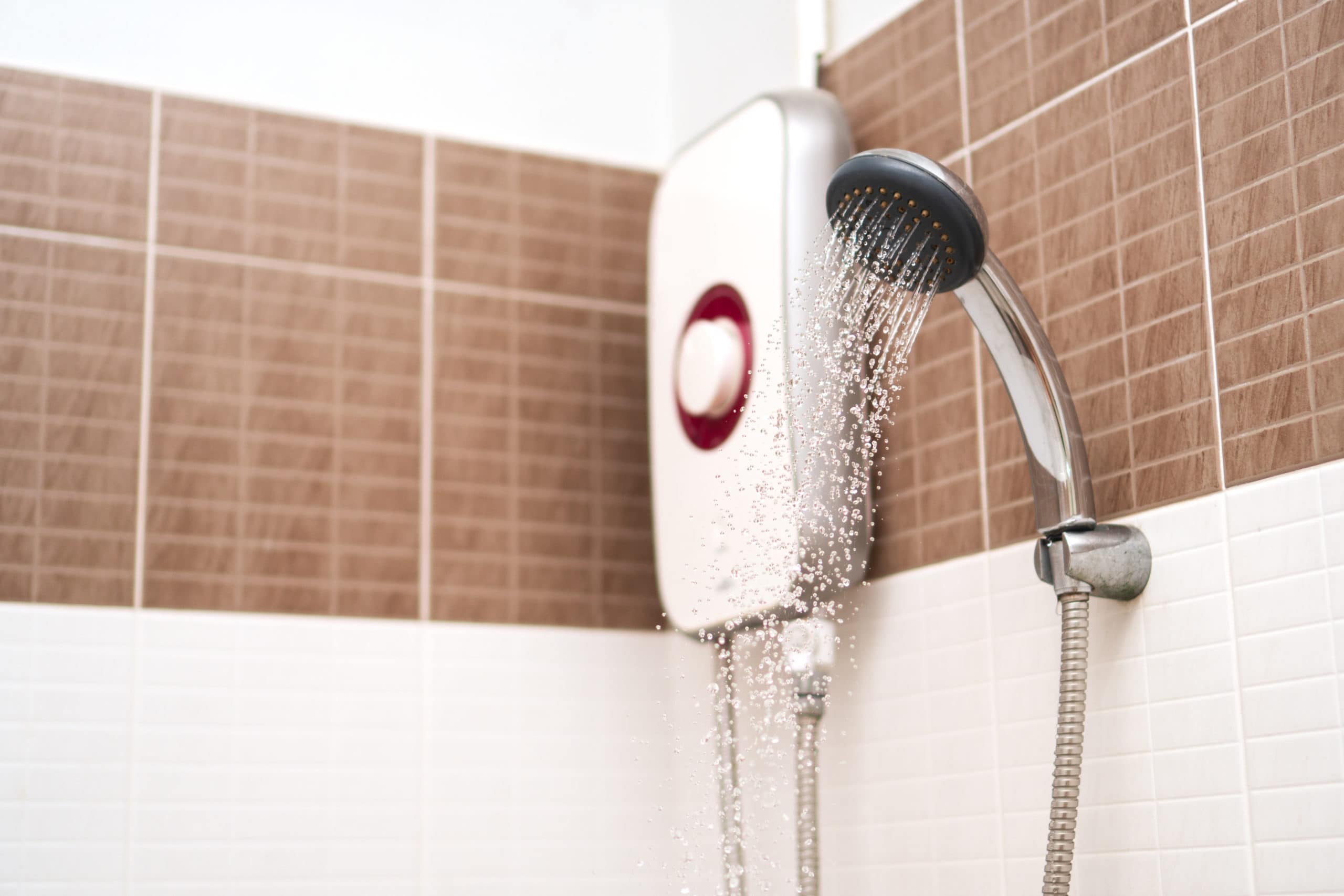Electric showers are not very common in English-speaking countries. Showers also have plumbing that is hidden out of sight, so it’s difficult to know exactly how they work. Here’s a rundown of exactly how an electric shower works.
As a general rule, water is passed over a heated element in the shower. The heated element heats the cold water that enters the shower before it flows out of the shower head. Typically, an increase in water pressure decreases the temperature.
Electric showers have a maximum heating capacity. Below, I will explain how an electric shower is different from a regular shower, how much electricity they use, and whether they’re any good.
How To Make an Electric Shower Hotter or Colder
A drawback of an electric shower is most models have a heating element that is one temperature. Although, the heating element can typically be turned up and down. It will generally, only perform like a regular shower when the temperature is turned all the way to the max AND the water pressure is set reasonably low.
When you first turn on an electric shower you can be surprised at how good the water pressure is. However, some models can’t heat water fast enough when the pressure is turned up very high. And if you turn the water tap all the way too high, it will be lukewarm or cold.

Difference between an electric shower and a regular shower
A regular shower is fed hot water from a hot water tank. The water that enters a regular shower is a mix of hot and cold water. The temperature of a regular shower is controlled by a valve that adjusts the amount of hot and cold water that exits the shower head.
Whereas, an electric shower is fed cold water directly into the shower head. Therefore, it does not rely on anything to heat the water. And only requires a cold water line and a connection to the electrical wiring in a home. For these reasons, it’s overall less complicated to install an electric shower.
Which is better an electric shower or a regular shower
A regular shower is very common in English speaking countries. Whereas, in many countries in South America electric showers are the norm. So, which one is better and why?
There are a few advantages of an electric shower:
- It’s less complicated to install
- You never run out of hot water
But, an electric shower also has some disadvantages. They are:
- It makes a loud noise when operating
- The water pressure is fixed at quite low
An electric shower heats cold water as it comes through the shower head. Unlike, a regular shower it won’t run out of hot water. It’s common for a hot water cylinder to run out if a lot of hot water is used at one time.
For example, if 3 or 4 people have back-to-back showers one after the other. In most homes, the hot water cylinder is sized for the number of people. And a larger hot water cylinder is installed in a home that has more bedrooms.
But, a big advantage of an electric shower is it will never, ever run out of hot water. Because, cold water is fed into the shower head, rather than from a hot water cylinder that heats a large volume of water at once. Which takes quite a bit of time.
Because an electric shower doesn’t use a hot water cylinder it’s very easy to connect up to the plumbing in the house. Whereas a regular shower is more complicated, lines from the mains to a hot water cylinder need to be installed. As well as, connecting the hot water lines from the hot water cylinder to the shower valve with the cold water.
An electric shower makes a reasonably loud buzzing noise when it’s operating. This is the sound of the heating element being turned on. While it’s not overly annoying, it does take getting used to, as a regular shower doesn’t have this noise.
The other disadvantage which could be viewed as both a pro and a con is that the water pressure is quite low.

How Do You Hook Up an Electric Shower
An electric shower is different from a regular shower because it also needs electrical wiring. Unlike a regular shower which only requires hot and cold water. This is how to hook up an electric shower.
Overall, an electric shower needs power from the electrical wiring in your home and a cold water supply line. An electrician will need to connect it to the switchboard in your home, they may also need to install additional wires in your home to reach the electric shower.
Interestingly, everything you need for an electric shower head is in the shower head. You simply need to plug it in and connect it up with water supply lines. This makes it simpler to identify if there is an issue with it. Because you don’t need to check if there is an issue with the plumbing, shower head, AND the hot water cylinder.
Does an Electric Shower Need a Hot Water Supply
Electric showers are not very common in certain regions, particularly the English-speaking countries. However, in other parts of the world such as South America, they are used almost exclusively.
For this reason, most English-speaking people aren’t aware of how an electric shower works, so here’s whether an electric shower needs a hot water supply.
An electric shower does not need a hot water supply. It only needs a cold water supply. An electric shower has a heating element inside it. When it’s operating the cold water is heated by a heating element before it exits the shower head.
In wintertime, cold water that sits in a water tank, or flows through the municipal pipes into your home is very cold due to the cold air temperature. Therefore, in winter time an electric shower isn’t as hot. Because the water going into it only passes over the heating element inside the shower head very briefly.
Whereas, the water that comes out of a shower fed by a hot water cylinder will always be the same temperature. A hot water cylinder has a thermostat. The thermostat is set to a certain temperature. A hot water cylinder will only stop heating the water when the water gets to the temperature set on the thermostat.

Amos Christen graduated with a bachelor’s degree in Interior Design from Drexel University — Philadelphia, PA. Since 2003, Amos has worked with top interior design professionals in this area, including architects and interior/graphic/lighting designers. As a skilled interior designer, Amos Christen is highly versed in fine arts and crafts and uses that to supplement his main area of expertise. He often publishes articles related to home décor on several websites, including Sprucetoilets.com, Sprucebathroom.com, and Mybesuitedhome.com. He also contributes to leading interior design magazines.
